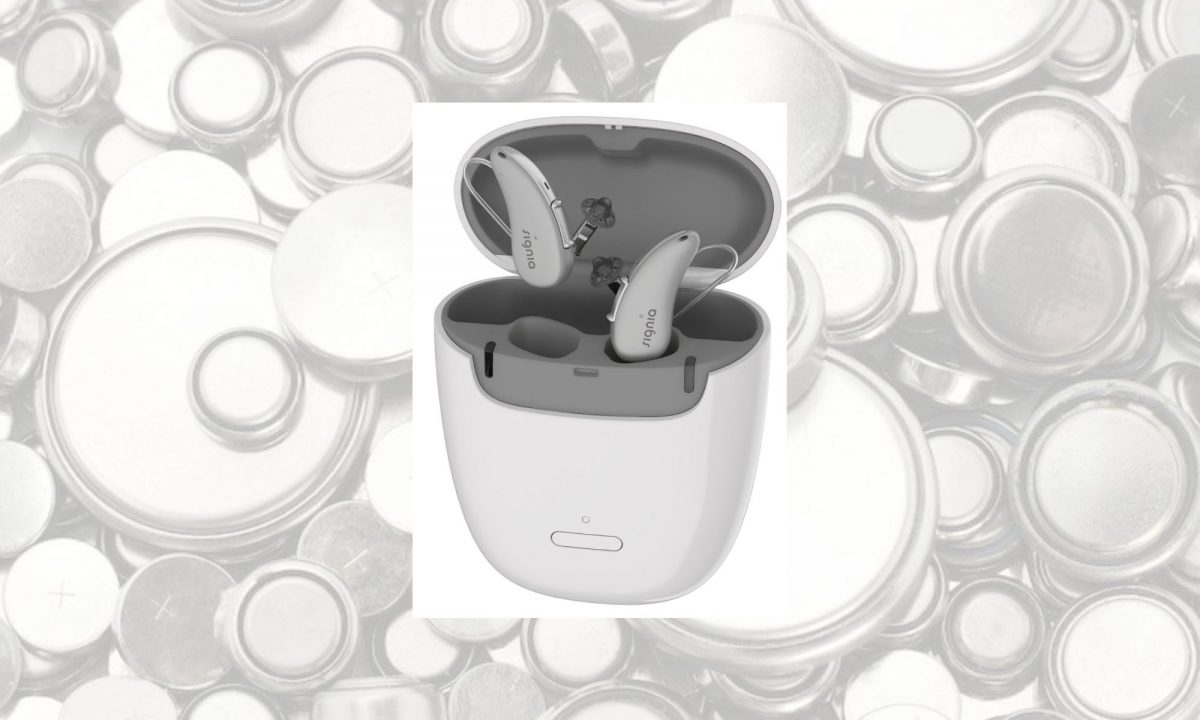If you’ve been following new product releases in the hearing aid world, you may have started to notice a trend. That is the move towards dropping disposable batteries and instead focusing on rechargeable devices. In fact, some of the latest technology to come out is not offering any removable battery models at all. For many people, this is a dream come true, but some may find the changing situation a bit daunting. So let’s take a good long look at what is going on.
Firstly, why is the hearing industry moving away from trustworthy little batteries? Well, this movement was started on an immense, international scale. It’s no secret that batteries are detrimental to the environment and should be disposed of safely. In fact, we encourage our patients to keep used batteries aside and bring them to the clinic for disposal.
These small batteries are also hazardous to children due to their size and toxicity. In Australia alone, 1 child per month suffers serious injury or worse from swallowing a battery. Because of this, the Australian Competition and Consumer Commission (ACCC) is introducing new mandatory safety standards on batteries*. With this in mind, many hearing aid manufacturers are actively looking to move away from batteries.
Furthermore, one of the major difficulties patients face with hearing aids is the dexterity required in changing batteries. Offering rechargeable devices is a way manufacturers looking out for our more vulnerable consumers. Not to mention you no longer have to remember to pick up batteries each time you visit the clinic.
So rechargeable devices, what does that actually mean? It simply means you place your devices in the charger at night, take them out in the morning, and voilà! Every manufacturer and hearing aid model is different, but most should give you a full day’s charge or more. And generally speaking, a half-hour charge will give you a few hours of hearing and streaming autonomy. The simplest way is to keep your charger plugged in next to your bed and charge them every night.
One of the main hesitation points from patients is “What happens if I go away?”. If you find yourself going out of town for a few days, it’s all good. You can bring your charger with you anywhere you go; the only thing you need is a powerpoint. The power plug is interchangeable, so you can change to the local plug if you travel overseas (one day!). You can also plug the charger cord into your car’s “cigarette lighter” using a USB adaptor plug. These can be bought in most shops and allow you to charge while the engine is on. We do recommend using chargers with a lid in this case to avoid the hearing aids falling out.
If you find yourself frequently in areas without power, no problem, next time you are in the clinic, ask how our team can help. Many models have an option of a portable or extra power charger. These will usually hold about 3 days of charge to keep you going even in remote areas. Different hearing aid models may also hold more charge. So if you are looking at getting new aids, you could look at models with more autonomy. Some chargers also come with a clean and dry feature to help protect your devices from moisture. So there’s a lot of fascinating options out there to suit everyone’s needs.
Some useful tips for using hearing aid chargers:
- Placing your hearing instrument in their charger (when turned on) will automatically turn them off. When you take them out, they will automatically turn on. But make sure the charger is plugged at the wall (or portable) or the devices will start to squeal.
- You can turn your devices on and off manually. For most models, this is done by pressing the bottom button down for about 5 seconds. Some models turn off using the button on your charger. Just ask one of our staff to show you the trick anytime.
- If you spend a lot of time in a different location, you might want to have a second charger. Many patients have a charger at work or in their second home to avoid travelling with them. Just ask your Falls of Sound clinic for pricing and options for your model’s extra charger.
- Keeping your hearing aids clean is always important, and so is your charger. Every so often, use a cotton bud to gently wipe the contacts in the charger and on the devices.
- When you place your hearing aids in their charger, always check the light comes on. This indicates the device is connected and charging. Sometimes contact isn’t properly made, so you might need to put it in again to be sure.
As time progresses, more and more devices will move to rechargeable only and leave removable batteries behind. This is an exciting time with so many benefits and added features! Over time as well, battery life will continue to increase, giving even more freedom and autonomy. If you have any questions or are looking at rechargeability for your new hearing aids, contact us anytime. Our Falls of Sound team will be happy to go through everything and find the best solution for you. And don’t forget to drop off any batteries at the clinic for safe disposal!

